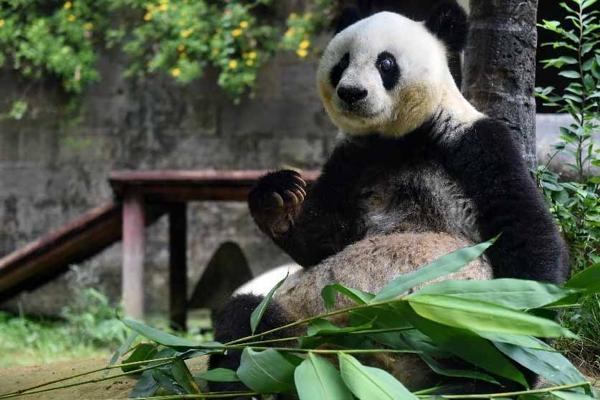
Giant panda Basi eats bamboo leaves at the panda research and exchange center in Fuzhou, capital of southeast China’s Fujian province, Sept. 25, 2015. Basi will turn 35 in November, making her over 100 in human years. The panda research and exchange center in Fuzhou want to invite 50 VIPP (very important panda people), including the American breeders and members of the public that the centenarian panda met during her performance tour in San Diego in 1987. Basi is possibly the most famous panda in China. In 1990, she was chosen as the prototype for Pan Pan, the mascot for the Beijing Asian Games. [Photo/Xinhua]
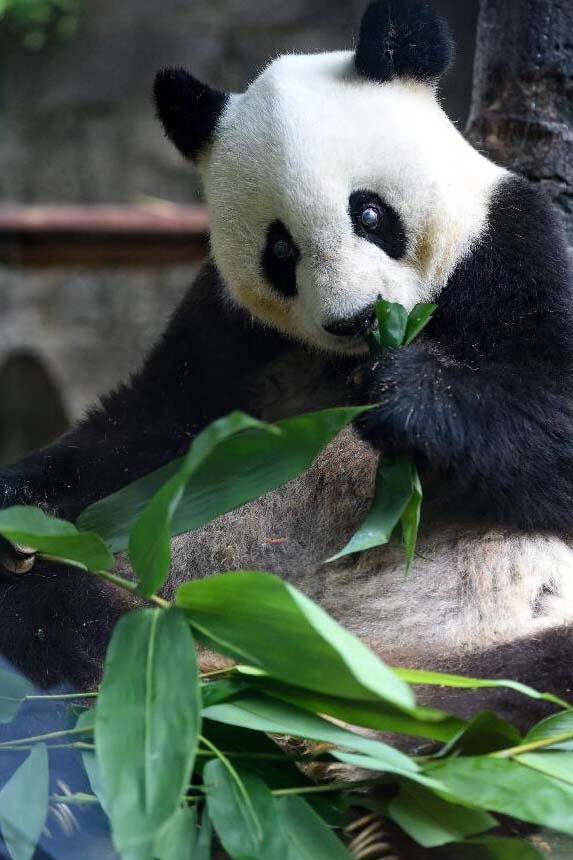
Giant panda Basi eats bamboo leaves at the panda research and exchange center in Fuzhou, capital of southeast China’s Fujian province, Sept. 25, 2015. Basi will turn 35 in November, making her over 100 in human years. The panda research and exchange center in Fuzhou want to invite 50 VIPP (very important panda people), including the American breeders and members of the public that the centenarian panda met during her performance tour in San Diego in 1987. Basi is possibly the most famous panda in China. In 1990, she was chosen as the prototype for Pan Pan, the mascot for the Beijing Asian Games. [Photo/Xinhua]
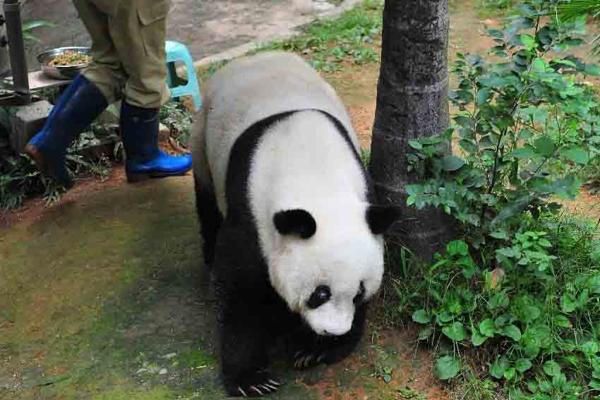
Giant panda Basi wanders at the panda research and exchange center in Fuzhou, capital of southeast China’s Fujian province, Sept. 25, 2015. Basi will turn 35 in November, making her over 100 in human years. The panda research and exchange center in Fuzhou want to invite 50 VIPP (very important panda people), including the American breeders and members of the public that the centenarian panda met during her performance tour in San Diego in 1987. Basi is possibly the most famous panda in China. In 1990, she was chosen as the prototype for Pan Pan, the mascot for the Beijing Asian Games. [Photo/Xinhua]
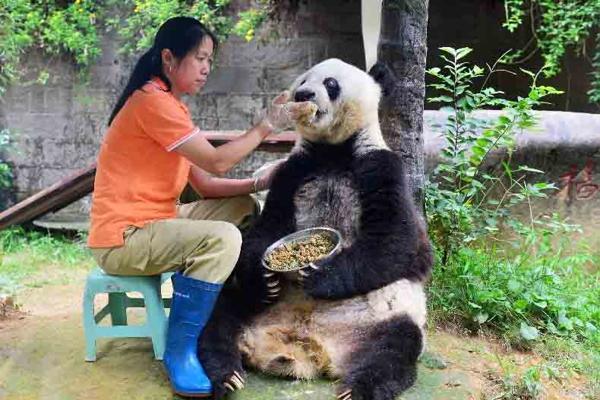
A keeper feeds giant panda Basi at the panda research and exchange center in Fuzhou, capital of southeast China’s Fujian province, Sept. 25, 2015. Basi will turn 35 in November, making her over 100 in human years. The panda research and exchange center in Fuzhou want to invite 50 VIPP (very important panda people), including the American breeders and members of the public that the centenarian panda met during her performance tour in San Diego in 1987. Basi is possibly the most famous panda in China. In 1990, she was chosen as the prototype for Pan Pan, the mascot for the Beijing Asian Games. [Photo/Xinhua]
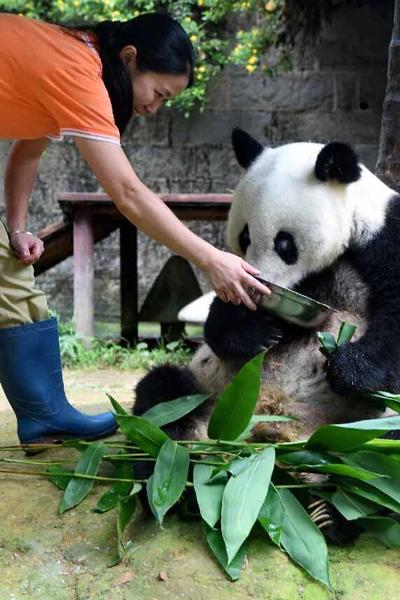
A keeper feeds giant panda Basi at the panda research and exchange center in Fuzhou, capital of southeast China’s Fujian province, Sept. 25, 2015. Basi will turn 35 in November, making her over 100 in human years. The panda research and exchange center in Fuzhou want to invite 50 VIPP (very important panda people), including the American breeders and members of the public that the centenarian panda met during her performance tour in San Diego in 1987. Basi is possibly the most famous panda in China. In 1990, she was chosen as the prototype for Pan Pan, the mascot for the Beijing Asian Games. [Photo/Xinhua]
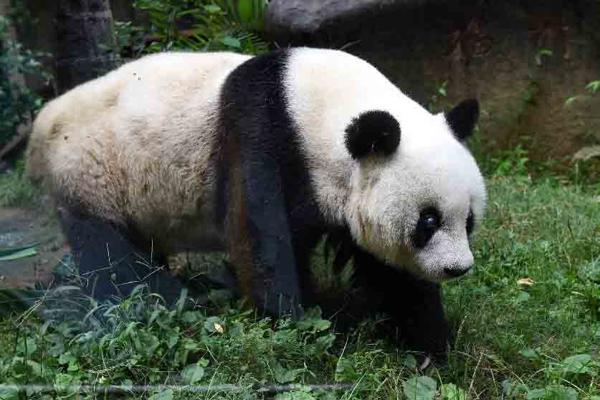
Giant panda Basi wanders at the panda research and exchange center in Fuzhou, capital of southeast China’s Fujian province, Sept. 25, 2015. Basi will turn 35 in November, making her over 100 in human years. The panda research and exchange center in Fuzhou want to invite 50 VIPP (very important panda people), including the American breeders and members of the public that the centenarian panda met during her performance tour in San Diego in 1987. Basi is possibly the most famous panda in China. In 1990, she was chosen as the prototype for Pan Pan, the mascot for the Beijing Asian Games. [Photo/Xinhua]
